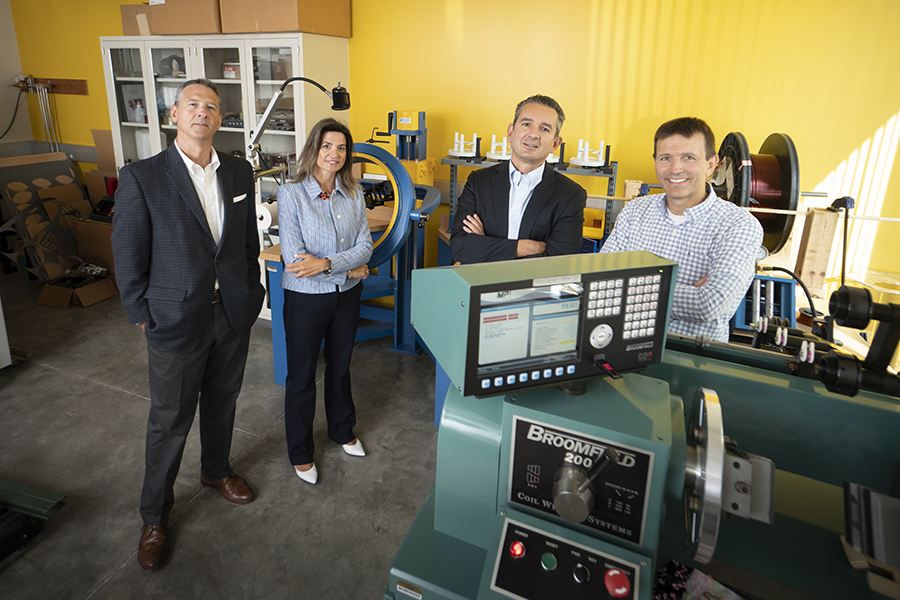Electrified Highway

Technology wirelessly charges electric vehicles while driving
This spring marked the groundbreaking for a giant leap forward in electric vehicle viability in the United States.
At the “Crossroads of America,” Purdue University engineers and the Indiana Department of Transportation (INDOT) are partnering to design and build infrastructure that allows electric vehicles ranging from semitrailers to passenger cars to wirelessly charge while driving on highways. Construction is in progress on a quarter-mile test bed in West Lafayette that the team will use for testing how well a patent-pending system designed by Purdue engineers can provide power to a heavy-duty electric truck traveling at highway speeds.
An electric truck provided by Indiana-based company Cummins Inc. will drive over the test bed as part of a pilot program planned to start next year with the hope to electrify a section of an Indiana interstate in the next four to five years.
“We are Purdue University, where the difficult is done today and the impossible takes a bit longer,” said John Haddock, professor of civil and construction engineering.
Purdue civil engineering PhD students Oscar Moncada (MSCE ’23) and Gaia Cervini (MSCE ’21) will conduct a comprehensive thermal analysis of the new highway segment, significantly contributing to the advancement of this transformative technology.
The Purdue-designed wireless charging system is intended to work at power levels much higher than what has been demonstrated in the U.S. thus far. By accommodating the higher power needs for heavy-duty vehicles, the design is also able to support the lower power needs of other vehicle classes.
“We’re developing a system that has the power to charge semitrailers as they move 65 miles per hour down the road,” Haddock said.
An electrified highway in Indiana would serve much of the nation’s traffic. Eighty percent of the U.S. can be reached within a day’s drive from the state’s pass-through highways. Building electrified highways with heavy-duty trucks in mind would maximize both greenhouse gas reductions and the economic feasibility of developing infrastructure for EVs.
“The so-called ‘middle mile’ of the supply chain, which refers to heavy-duty trucks carrying goods from one major location to another, is the most challenging part of the transportation sector to decarbonize,” said Nadia Gkritza, professor of civil and construction engineering and agricultural and biological engineering.
The wireless charging system includes transmitter coils that would be installed in specially dedicated lanes underneath normal concrete pavement to send power to receiver coils attached to the underside of a vehicle.
The researchers anticipate that it may be 20 to 30 years before EVs can receive the full power they need while driving at highway speeds. It is up to EV manufacturers to incorporate receiver coils into their vehicles.

Construction is in progress on a quarter-mile test bed on U.S. Highway 231 and U.S. Highway 52 in West Lafayette that the team will use for testing how well a patent-pending system designed by Purdue engineers can provide power to a heavy-duty electric truck traveling at highway speeds.
